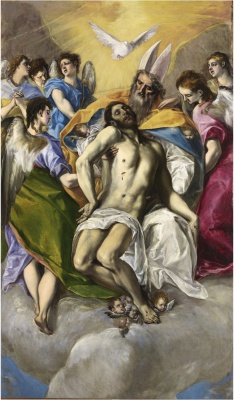Descripción de la Exposición ------------------------------------------------------- ------------------------------------------------------- The Abrons Arts Center present Parts and Labor, an exhibition presenting the work of five New York City-based artists: Daniel Bejar, Cecilia Biagini, Juanli Carrión, Jonathan Durham, and Noah Loesberg. These artists allude to machinery, technology, and architecture through a series of geometric and non-objective compositions, tracing back to the Suprematist and Constructivist movements by the Russian avant-garde at the time of the fall of the tsarist regime. Through the use of industrial materials and motifs, the artists salvage the wreckage from a years-long global recession and explore a promise of utopia and utility. The radical change following the October Revolution inspired a rational, social function for art, emphasizing the artist as engineer. This exhibition adopts those principles, referencing the calls for democracy and economic reform in the social uprisings across the Middle East, Europe, and the United States. Formally engaging the Brutalist architecture of the Abrons gallery and adjacent amphitheater, the artists yield essence over representation and process over product. In his Realistic Manifesto, Naum Gabo saw the Revolution as the beginning of a renewal of human values. As demonstrations flourish in Manhattan's Wall Street and across the globe demanding economic reform, Parts and Labor looks to Constructivism and its examination of the fundamental properties of art and its place in the coming society. Parts and Labor is curated by Adrian Geraldo Saldaña and part of the series Prized Vernacular, a platform for three exhibitions opening concurrently at the Abrons that deconstruct a vernacular 'everyday.' In light of the global economic recession, ordinary objects are presented as radicalized - prisms to a common unequally shared or realized. Reflecting cultural and economic difference, Prized Vernacular investigates this 'new normal.' Best known for his adaptations of industrial and architectural forms, Noah Loesberg evokes the maquette of a Bolshevik factory or government building with Heat Sink. Fins of right-angled 'steel' form the narrow corridors of the labyrinthine structure, while also inverting the scale of contemporary heat sinks for computers, now minuscule devices. Drawings from his 'tire tread' series optically suggest progression and recession through the arrangement of chevrons and polygons. Exploring the tension between design and fine art, Loesberg's investigations of the built environment situate him as a prime example of the artist-engineer. Versed in the vocabulary of geometric abstraction, Cecilia Biagini has adapted her own visual language of reductive art through sculpture, painting and photograms. Her reliefs capture the flat planes of color so native to the proponents of Constructivist school, resolving their desire for three-dimensionality and kineticism. Her choice of wooden forms capitalizes on their inherent qualities of texture and color. The photogram Geometria del Espacio is a manipulation of light and photographic paper to a sublime, ethereal effect, channeling the pictoral complexity and aesthetic theories of László Moholy-Nagy. Daniel Bejar's The Visual Topography of a Generation Gap is an arresting gesture towards memory, repetition and loss. An apartment key is duplicated and then the copy is duplicated, slightly degrading the original's information. The process is repeated and the dozens of affixed keys form a sloping terrain. Bejar's discourse of mass production and evolution belie the mundane nature of the original object. Jonathan Durham presents a careful analysis of modern, militarized materials in Crash and Ration. His use of a helicopter - a refurbished husk whose only purpose is for cinematic stunts - speaks to the propaganda and contradictions that accompany armed revolution. The precise functional elements of the cockpit have been completely striped down to their basic structural geometry, truncated and upended. Inside this shell are handmade versions of a Russian MRE folding stove and assorted canned meats that reference the advancements in food storage and the need for systematic food preservation running parallel to recession and wartime efforts. Durham's performance MRE Tomorrow, scheduled for Friday, December 16, 2011, at 7 p.m., is a sculptural action involving excavating MRE food materials from inside cast concrete and helicopter parts and cooking them with a small folding stove. The Constructivist integration of both technology and social purpose in artmaking is the driving force in Juanli Carrión's Building the Neverending Ruin of the World. Based on theorist's Victor Burgin's idea that the 'sum of all photographies is the ruin of the world,' Carrión fashions a studio to collect a series of digital images on flash drives. These are produced by the Google search for the word 'ruin' in English, Spanish, and Basque. Scheduled to work in the gallery from 10 a.m.-2 p.m. every Tuesday through Thursday and Saturday to Sunday, his process will be broadcast via Skype to ARTIUM, the Basque Museum-Center of Contemporary Art in Spain. Midway through the exhibition, Carrión will travel to Spain to develop the same process at ARTIUM, Skyping his practice to the Abrons gallery. Each week his aggregations will be juxtaposed upon another and exhibited as single images, each corresponding to one of the search languages in the two different locations. The resulting pieces will show a completely abstracted landscape containing fragments of many volumes of data. Building the Neverending Ruin on the World is a project curated by Blanca de la Torre. Produced by ARTIUM with the collaboration of the Abrons Arts Center and the support of Recess
Artistas: Daniel Bejar, Cecilia Biagini, Juanli Carrión, Jonathan Durham y Noah Loesberg.

Exposición. 18 feb de 2025 - 15 jun de 2025 / Museo Nacional del Prado / Madrid, España

Formación. 01 oct de 2024 - 04 abr de 2025 / PHotoEspaña / Madrid, España